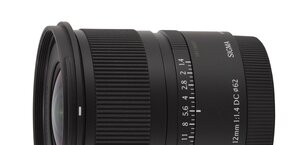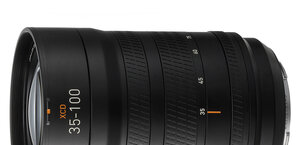Tamron AF 18-250 mm f/3.5-6.3 Di II LD Aspherical (IF)
4. Image resolution

When we deal with shorter focal lengths, there’s really nothing to carp about. The performance in the 18 to 50 mm focal range is good and momentarily even very good. It is similar to the performance of new Canon or Nikon kit lenses with the image stabilization system. We must notice, though, that the Tamron 18-250 mm fares a bit worse than its cousin with 18-270 VC parameters and significantly worse than a Sigma 18-200 OS.
Please Support UsIf you enjoy our reviews and articles, and you want us to continue our work please, support our website by donating through PayPal. The funds are going to be used for paying our editorial team, renting servers, and equipping our testing studio; only that way we will be able to continue providing you interesting content for free. |
- - - - - - - - - - - - - - - - - - - - - - - - - - - - - - - - - - - - - - - - - - - - - - - -
Much more problems will be noticed at longer focal lengths. In fact, as early as at 125 mm we’ve got plenty reasons to complain about. At the maximum aperture the results barely exceed the level of 20 lpmm and the decency level of 30 lpmm is exceeded only by f/11.The results are even worse at the maximum focal length. The decency limit of 30 lpmm is practically unavailable at any aperture and when we combine it with the maximum aperture, we don’t even get 20 lpmm. The Tamron 18-270 fared a lot better and the Sigma 18-200 OS didn’t have any troubles with exceeding 30 lpmm even for the difficult combination of the maximum aperture and the maximum focal length. The Tamron 18-250 is the most similar to…the Tamron 18-200 mm, also criticized by us for its lacklustre performance at longer focal lengths.

When it comes to the frame edge performance, the situation is again worse. Even stabilized Canon and Nikon18-55 mm kit lenses were better than the tested Tamron. To be honest, in the range of 18-55 mm the situation is not that bad – we can get results, appropriate for an average quality instrument which still enables us to take some nice, moderately sharp shots. The real tragedy starts over 100 mm focal length, where we never reach the 30 lpmm decency level and trying the maximum focal length we get serious problems with exceeding significantly even 20 lpmm. Once again the performance can be only compared to the weak Tamron 18-200 mm, although the latter was even weaker towards the short end of the focal range.
Here, we must notice one more thing. To check how the lens hits the target from different distances we conduct our tests on several test wall charts of different sizes – a lens and a body are each time positioned in different distance from them. The charts, presented above, are the result of averaging out the vertical and horizontal MTF values, measured on several wall charts. When the differences between individual wall charts are small, we simply don’t mention them. In the case of the Tamron 18-250 mm, though, they were noticeable, as the lens showed a clear image quality deterioration tendency when passing to close distances. While its infinity performance might be acceptable, the close distance resolution results are really outrageous. It’s enough to look carefully at the sample plants pictures from the last chapter to understand what I mean – it simply goes without saying.
If you want to assess the Tamron lenses, the order will be obvious and, what’s very interesting indeed, the wider focal lengths range we are given, the better optics we are dealing with. The Tamron 18-200 mm fares the worst, then comes the Tamron 18-250 mm, tested here, and the best is the Tamron 18-270 VC. Although the Tamron 18-250 mm was placed in the middle of the stake, the comparison between this lens and other 18-200 mm class megazooms ( like the Sigma 18-200 OS or the Nikkor 18-200 VR) is very unfavourable to the former.
At the end of this chapter we present cuttings from our test scene, based on JPEG files saved along with RAW files.
 |






